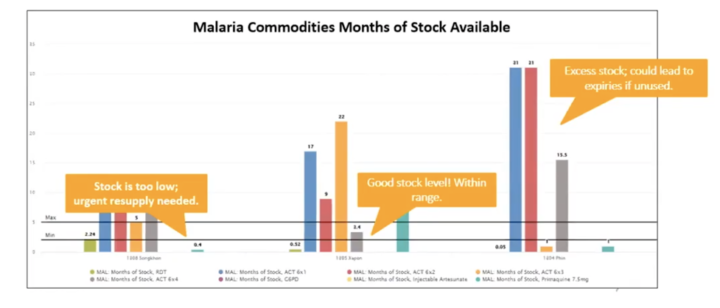Combining Health and Supply Chain Management in Lao with DHIS2
Lao has integrated mSupply and DHIS2 to facilitate joint analysis of logistics and health program data to achieve more actionable analysis and support efficient planning
Disruptions of the supply chain, including drug expiry and stock-outs, lead to inefficient and ineffective patient care in HIV and malaria programs. To address supply chain management challenges in the Lao People’s Democratic Republic, the Ministry of Health (MoH) implemented an electronic Logistics Management Information System (eLMIS) using the mSupply software system at all drug warehouses across central, provincial, and district levels.
At the same time, the 2017-2021 Lao PDR eHealth Strategy facilitated the migration of historically fragmented health data into a centralized Health Management Information System (HMIS) using DHIS2. This HMIS includes health data from a variety of programs, as well as basic logistics data entered using aggregate DHIS2 forms for programs or facilities (for example health centers) that were not using mSupply.
Breaking out of silos through system integration
As of 2019, health and logistics information was being effectively captured within Lao’s two eLMIS and HMIS systems, but the systems were not connected with each other — the data existed in silos — meaning that program managers could not easily utilize combined health and logistics information to make informed planning decisions. In particular, while mSupply as a system is optimized for procurement and supply chain management, some data contained in Lao’s eLMIS are also essential for programmatic decision makers in other areas of the MoH, not just those who work directly with logistics. So, while both DHIS2 and mSupply systems were working well on their own, it became clear in Lao that both could be even more useful if the information contained separately in each system could be brought together into one system.

To achieve this, Lao’s MoH embarked on a project to integrate their HMIS and eLMIS systems. The approach to integration they selected was through the use of native APIs in both systems to push key mSupply data to an aggregate DHIS2 form on a weekly basis to enable logistics analysis in relation to health data within DHIS2. Recipient organisation units and data elements were configured using standardized codes to enable flexible and sustainable administration within the mSupply and DHIS2 systems.
Combined health and logistics data leads to actionable analysis
 Lao’s mSupply-DHIS2 integration enables flexible review of data elements for item and/or location-specific monitoring, and is configured to support the analysis needs of a variety of health programs. For example, the national Malaria program uses testing and case data from DHIS2 to develop specific stock thresholds, which when combined with data from mSupply facilitate more actionable analysis.
Lao’s mSupply-DHIS2 integration enables flexible review of data elements for item and/or location-specific monitoring, and is configured to support the analysis needs of a variety of health programs. For example, the national Malaria program uses testing and case data from DHIS2 to develop specific stock thresholds, which when combined with data from mSupply facilitate more actionable analysis.

In addition, months of stock available at a given facility can be compared to maximum and minimum thresholds to efficiently guide decision makers to address stock shortages or expected stock expiration across facilities. Maximum stock thresholds and expiry data can thus efficiently define corrective action for stock resupply or redistribution, especially when analyzed in relation to testing and case data. This analysis in DHIS2 is not only valuable for identifying inefficiencies but also for informing solutions and optimizing the distribution of stocks for key health programs in Lao.
For more information on this project, watch the video below for a presentation by Dr. Chansaly Phommavongat of Lao PDR at the DHIS2 Academy on Logistics Data Integration:


